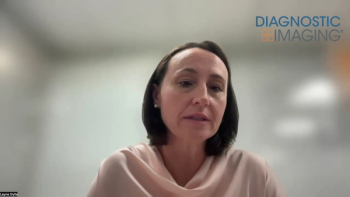
Regular FDG PET/CT Imaging Identifies Good Outcomes Among Young Osteosarcoma Patients
Imaging with FDG PET/CT may identify children and young adult osteosarcoma patients who may experience good outcomes.
Clinician may identify which osteosarcoma patients may have a good outcome through FDG PET/CT imaging at regular intervals, according to a study published in the
Researchers from Tennessee, Texas, and California sought to determine the relationship of 18F-FDG uptake in the primary tumor at diagnosis of children and young adults with osteosarcoma (OS) during therapy, and after therapy with a histologic response and event-free survival.
Thirty-four newly diagnosed OS patients, 17 male, were included in the study. The patients’ median age was 12.2 years. Twenty-five of the patients (74 percent) had localized disease. Primary tumor locations were:
• Femur in 17 patients (50 percent)
• Tibia in nine patients (26 percent)
• Humerus in five patients (15 percent)
Baseline 18F-FDG PET/CT imaging was performed with all patients and repeated at five and 10 weeks after start of therapy. Whole-body images were obtained approximately one hour after injection of 18F-FDG. Logistic regression was used to study the association of tumor uptake and changes in SUVmax between zero, five, and 10 weeks for both clinical endpoints.
The results showed that SUVmax at five weeks and 10 weeks, and percentage change from baseline at 10 weeks were highly predictive of a histologic response. Using SUVmax of 4.04 at week five, SUVmax of 3.15 at week 10, and 60 percent decrease from baseline at week 10 as cutoff values, the researchers determined that the respective sensitivities were 0.93, 0.93, and 0.79 and that the respective specificities were 0.53, 0.71, and 0.76.
The researchers concluded that SUVmax on routine images at five or 10 week and percentage change in SUVmax from baseline to week 10 were metabolic predictors of a histologic response in OS. “These findings may be useful in the early identification of patients who are responding poorly to therapy and may benefit from a change in treatment,” they wrote.
Newsletter
Stay at the forefront of radiology with the Diagnostic Imaging newsletter, delivering the latest news, clinical insights, and imaging advancements for today’s radiologists.



























